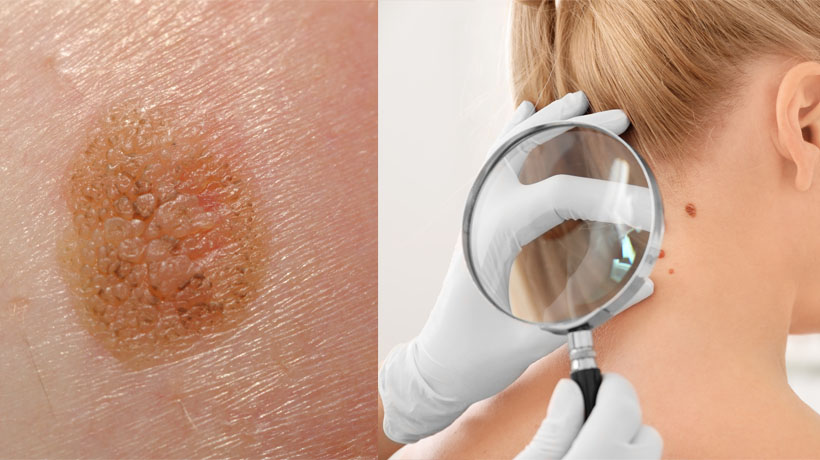While we get in our last licks of summer, you may feel tempted to flock to the beach and soak up as much sun as you can possible (I know I do). But before you lay outstretched on the sand in your swimsuit, be mindful of your time and exposure underneath golden rays. Skin cancer – the abnormal growth of skin cells – most often develops on skin exposed to the sun (but can also occur on areas of your skin that rarely see the light of day). Checking your skin periodically for any suspicious changes can help detect skin cancer at its earliest stages to ensure a greater chance for successful treatment. Use the following ABCDE rule to identify any questionable skin moles or growths.
Asymmetry
If you draw a line through your mole, do the two sides match up? If it is a benign mole, then it should. If not, this should be a red flag.
Border
Healthy moles are typically smooth at the edges with even borders. A cancerous mole of early melanoma has edges that are irregular, ragged, notched, or blurred and tend to be uneven.
Color
Benign moles are typically all one color. Having a mole of a variety of colors is a strong warning signal–-whether it’s comprised of different shades of tan, black or brown. Melanomas can also become red, white or even blue.
Diameter
Though malignant moles can be smaller when first detected, they are typically larger in diameter than the eraser on a pencil tip (¼ inch or 6mm).
Evolving
Harmless moles tend to look the same over time. If you have a mole that’s taking on a different shape, color, size or change in any way, consult a medical professional. Any new symptoms of the mole itching, bleeding or crusting can also point to danger.
Note that most skin cancers are preventable. To protect yourself, try to avoid the sun midday when rays are the strongest. If you are outside, wear sunscreen year-round (not just in the summertime). Wear protective clothing and gear that provides complete UV protection, avoid tanning beds and be on the lookout for sun-sensitizing medications or products. Lastly, If you notice any skin changes that concern you, be sure to get it checked.
Sources:
https://www.mayoclinic.org/diseases-conditions/skin-cancer/symptoms-causes/syc-20377605
https://www.skincancer.org/skin-cancer-information/melanoma/melanoma-warning-signs-and-images/do-you-know-your-abcdes#panel1-5



